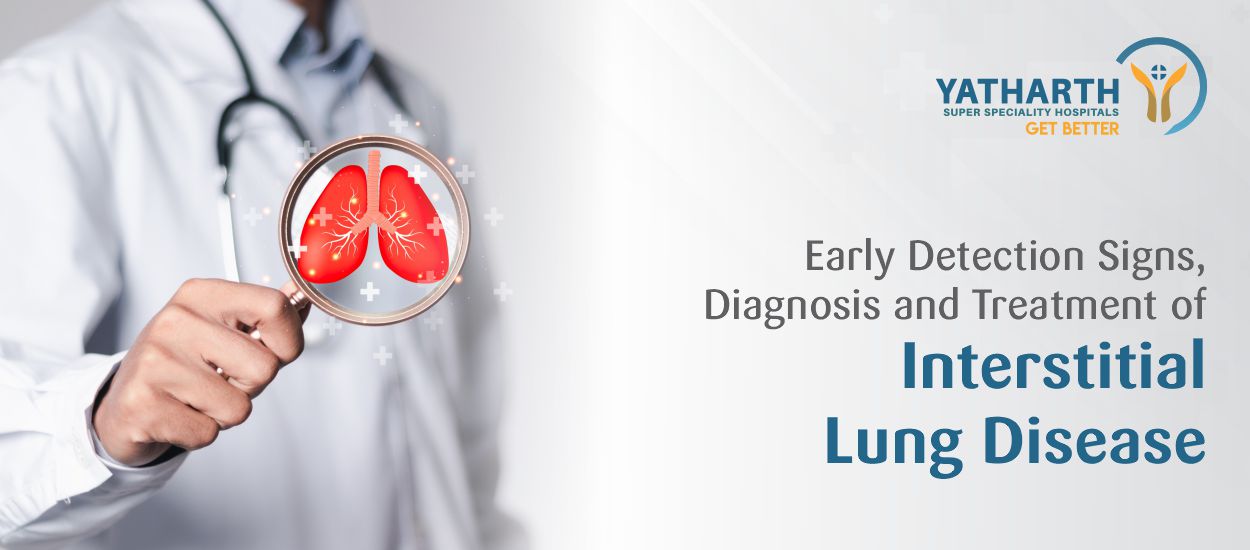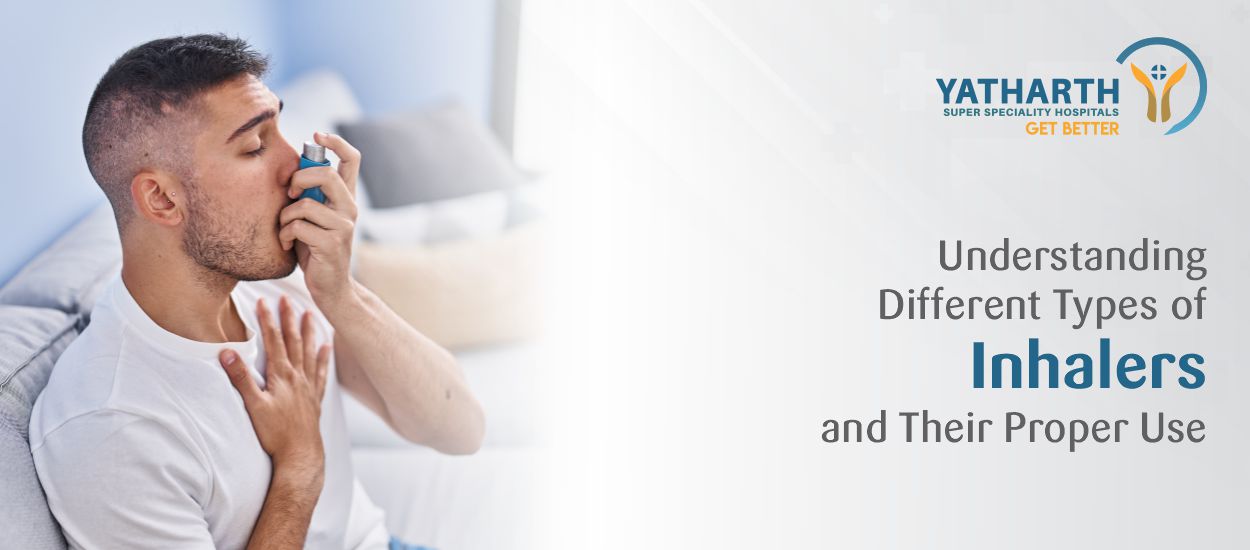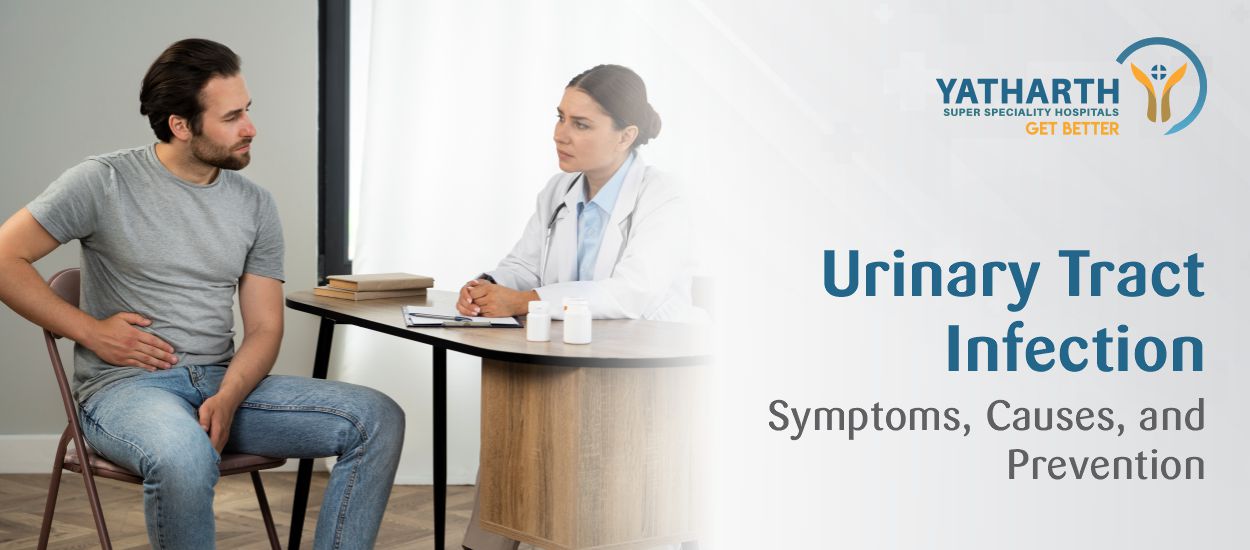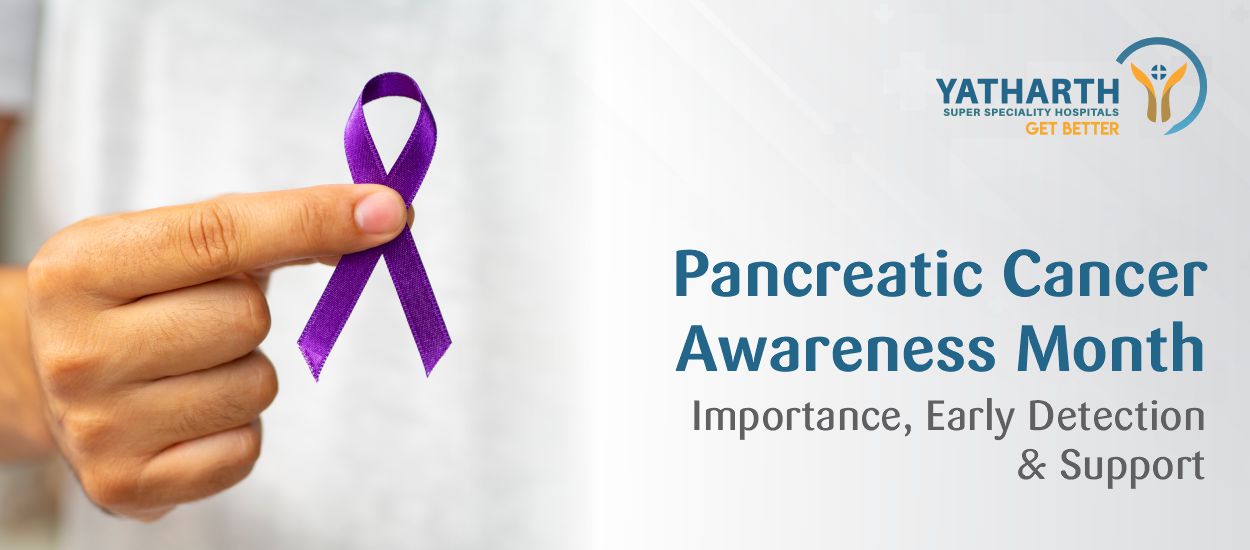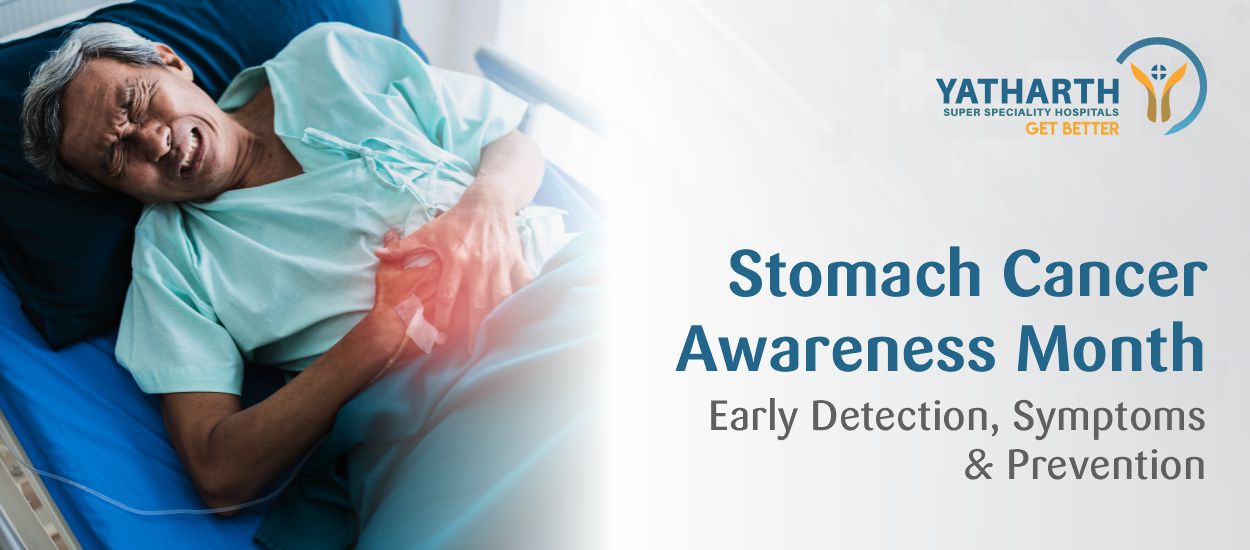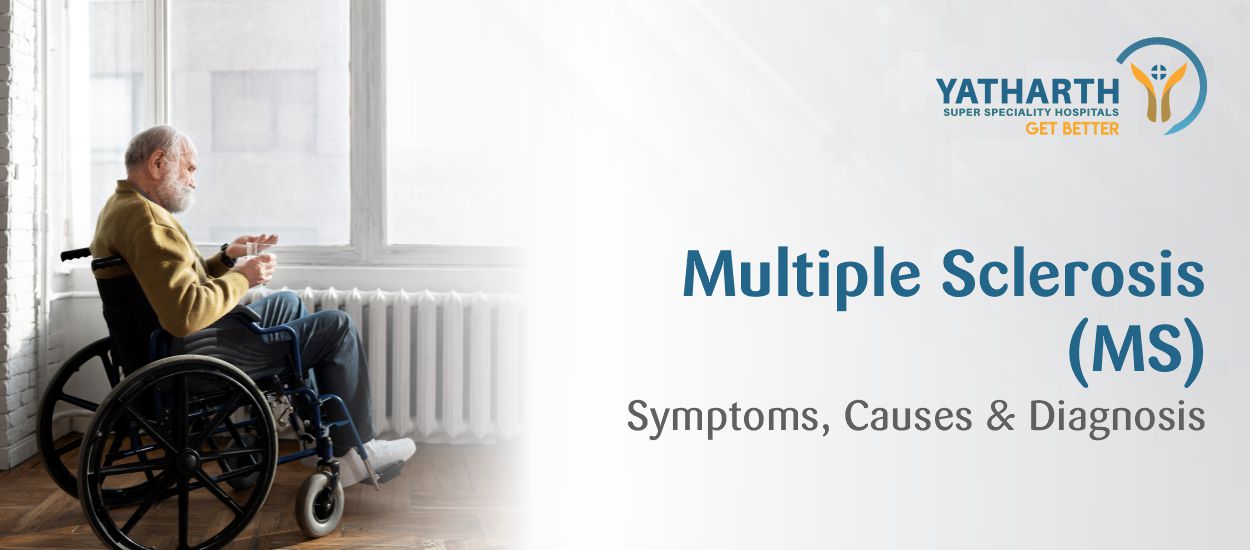Overview
Interstitial lung disease (ILD) refers to a group of conditions causing scarring and inflammation in the lungs. The condition damages tissues between the small air sacs in the lungs and the blood vessels surrounding them. As a result, it’s hard for oxygen to move intoyour lungs and into the body.
With ILD, sections of the lungs transporting oxygen into the blood and out to the tissues get damaged. Scarredlungs makebreathing difficult and may cause a chronic cough. One also feels tired throughout the day because of less oxygen. If the damage worsens, it can lead to life-threatening complications, including lung infections / respiratory failure as the body has less oxygen and excess carbon dioxide.
Of more than 200 interstitial lung diseases, idiopathic pulmonary fibrosis is the most common, followed by those triggered due to connective tissue disorders or occupational exposures. Other examples include sarcoidosis, Post COVID lung injury, silicosis, asbestosis, radiation pneumonitis and nonspecific interstitial pneumonia, including DMS.
Persons at Higher Risk for ILD
A person has higher chances of developing ILD if he/she:
- Has an autoimmune disorder affecting the lungs
- Smokes or did so earlier.
- Has a history of specific ailments or conditions, such as viral pneumonia, or connective tissue diseases.
- Worksin an environment with substances that could irritate the lungssuch as silica, asbestos, fungi,moulds or bacteria.
- Has had chest radiation.
- Has had chronic exposure to pigeon/bird feather allergens & droppings
- Has chronic acid reflux
- Certain medications can also have side effects causing ILD.
As numerous types of ILD exist, the condition may be mild or serious,depending on the variant. While most types can cause irreversible lung damage,a vast percentage of serious ILDs are progressiveand the patient’s condition gradually worsenswith time.
Understanding the Symptoms and Causes
Common ILD symptomsinclude shortness of breath (which worsens with exercise/exertion), fatigue,dry cough and chest discomfort. Generally mild in the beginning, the symptoms get worse within months or years. Depending on ILD’s primary cause, additional symptoms could occur.
The causes of ILD may be known or unknown. Known ones could include radiation, some medications or harmful substances, or autoimmune diseases. The cause is unknown if no underlying conditions exist or if one has not been exposed to some causative factor. The symptoms of many medical conditions could also seem like ILD. Before making a diagnosis, doctors need to rule out these conditions.
Other known causes may include connective tissue diseaseslike rheumatoid arthritis, scleroderma and lupus; granulomatous disease, such as sarcoidosis; inhalation of certain substances (silica, asbestos, tobacco and beryllium); allergic reactions to something inhaled, including fungi, moulds, bacteria and bits of bird droppings or feathers.
As for unknown causes, if doctors fail to find the cause, it istermed idiopathic interstitial pneumonia. While there are several kinds of idiopathic interstitial pneumonia,idiopathic pulmonary fibrosis remains the most common ILD without anyknown cause.
Diagnosis and Tests
Interstitial lung disease is diagnosed through a physical exam, imaging tests or testing of lung function. During the exam, the doctor will listen to your lungs to detect unusual sounds that indicate they are not functioning properly.
Tests to diagnose ILD include:
Pulmonary function tests: Generally breathing tests, they could also constitute blood or exercise tests. These will check if the lungs are working well.
Imaging tests: X-rays and high-resolution CT scans may be used to obtain images of the lungs.
Blood tests: A blood sample will check for any signs of known ILD causes.
Bronchoscopy: A thin tube (bronchoscope) will be inserted via the nose or mouth into your lungs to view the airways.
Biopsy:A small tissue sample will be removed from the lung and examined under a microscope to discover the type of ILD.
Managing and Treating the Disease
Since interstitial lung disease has no cure, the treatment is focused on treating the underlying ailment and improving symptoms. Physical therapy, oxygen therapy or drugs to lower inflammation or slow disease progression may also be prescribed. Corticosteroids, anti-fibrotic and cytotoxic medications and biologic drugs could also be used to treat ILD.
Further, since GERD (gastroesophageal reflux disease) may make ILD worse, the doctor could prescribe drugs to control stomach acids. Pulmonary rehabilitationwill also be prescribed as breathing exercises and physical therapy strengthen the lungs,making it easier to breathe. Moreover, oxygen therapy will be prescribed so your blood or tissues have ample oxygen,which is delivered via a mask or tube in the nose. In severe cases, a lung transplant will be advised as a last resort if other options have failed.
Side Effects
MostILD treatments can compromise the immune system. The doctor will monitor the patient closely to check if any medications are causing complications.
Is Prevention Possible?
Many ILD causes cannot be prevented. However, the risk of the disease can be reduced if underlying conditions are managed and one avoids inhaling harmful substances. People working in surroundings with harmful substances (asbestos, chemicals or metal dust) must use a respirator (a mask for filtering airborne particles). This applies equally to places with harmful substances – like grains, hay, bird feathers or droppings and heating/cooling systems – that could trigger chronic allergic reactions.
People with sarcoidosis or a connective tissue disease should speak with their doctor about how to manage the ailment to prevent ILD. Also, avoid smoking or quit if you do smoke.
Outlook and Prognosis
How ILD can be managed depends on its cause. If it is because of occupational exposure or allergy (hypersensitivity pneumonitis), one needs to stop working in this environment or employ additional precautions.
While drugs could help reduce inflammation, scarring due to ILD is irreversible. If there is an underlying disease, managing the condition could help prevent more damage. If the cause remains unknown, the doctor will treat the symptoms to prevent any additional damage.
Avoiding Complications
Managing ILD is important because severe cases could cause life-threatening complications. These include high blood pressure in the lungs (pulmonary hypertension), collapsed lungs (pneumothorax), lung infections, respiratory failure and lung cancer.
Life Expectancy for People with ILD
With ILD, a person’s life expectancy will depend on its cause and severity. Some with mild ILD could live normal lives without any treatment or minimal treatment. The outlook is better if the condition is not worsening (remains stable).
For those with the most severe or rapidly worsening types of ILD, life expectancy may be about three to five years after the diagnosis.
Living with the Condition
Treatment may not prevent the condition from worsening. However, some treatments may slow ILD or improve symptoms for a brief period while others can help in maintaining a better quality of life.
For people diagnosed with ILD, the best option to safeguard their well-being is to create a plan with the doctor’s help to manage the symptoms and avoid any more damage. Therefore, underlying conditions should be treated and anything that could lead to ILD (such as GERD) must be managed proactively.
It is advisable to visit the doctor if you experience rising shortness of breath or breathlessness when exercising or have an ongoing cough. The outlook for ILD remains better if it is treated early. Finally, respiratory infections could worsen ILD symptoms. So ensure you take vaccines for flu and pneumonia.
